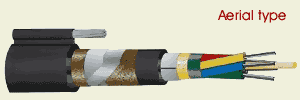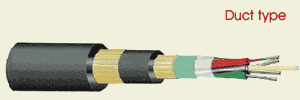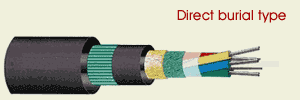
Fiber Optic Cables
Fiber optic cable price list
Cable Types |
Unit Price USD / MT. |
||
SM-9/125 Central tube steel armored external fiber optic cable |
|||
|
4 |
core |
0,43$ |
|
|
8 |
core |
0,53$ |
|
|
12 |
core |
0,66$ |
|
|
24 |
core |
1,04$ |
|
|
48 |
core ( Multi Tube) |
1,93$ |
|
SM-9/125 Central tube steel armored internal / external LSZH fiber optic cable |
|||
|
4 |
core |
0,60$ |
|
|
8 |
core |
0,75$ |
|
|
12 |
core |
0,90$ |
|
|
24 |
core |
1,45$ |
|
MM-50/125 OM2 Central tube steel armored external fiber optic cable |
|||
|
4 |
core |
0,63$ |
|
|
8 |
core |
0,81$ |
|
|
12 |
core |
1,06$ |
|
|
24 |
core |
1,85$ |
|
MM-50/125 OM2 Central tube steel armored internal / external LSZH fiber optic cable |
|||
|
4 |
core |
0,83$ |
|
|
8 |
core |
1,01$ |
|
|
12 |
core |
1,21$ |
|
|
24 |
core |
1,93$ |
|
MM-50/125 OM3 Central tube steel armored external fiber optic cable |
|||
|
4 |
core |
0,90$ |
|
|
8 |
core |
1,31$ |
|
|
12 |
core |
1,73$ |
|
|
24 |
core |
2,78$ |
|
MM-50/125 OM3 Central tube steel armored internal / external LSZH fiber optic cable |
|||
|
4 |
core |
1,10$ |
|
|
8 |
core |
1,55$ |
|
|
12 |
core |
2,01$ |
|
|
24 |
core |
3,57$ |
|
MM-62,5/125 OM1 Central tube steel armored external fiber optic cable |
|||
|
4 |
core |
0,76$ |
|
|
8 |
core |
1,06$ |
|
|
12 |
core |
1,37$ |
|
|
24 |
core |
2,53$ |
|
MM-62,5/125 OM1 Central tube steel armored internal / external LSZH fiber optic cable |
|||
|
4 |
core |
0,97$ |
|
|
8 |
core |
1,29$ |
|
|
12 |
core |
1,60$ |
|
| 24 | core | 2,74$ | |
MM-50/125 OM4 Central tube steel armored external fiber optic cable |
|||
| 4 | core | 1,27$ | |
| 8 | core | 2,13$ | |
| 12 | core | 2,96$ | |
| 24 | core | 4,68$ | |
MM-50/125 OM4 Central tube steel armored internal / external LSZH fiber optic cable |
|||
| 4 | core | 1,68$ | |
| 8 | core | 2,33$ | |
| 12 | core | 3,19$ | |
| 24 | core | 5,89$ | |
Fiber optic Cables
There are two types of Optical Fiber. Single Mode Fiber and Multi Mode Fiber.
Multimode cables
Demand for systems such as Internet access, communication systems, video communication and voice over IP is increasing day by day. Such applications require more bandwidth due to the requirements, and therefore more bandwidth-enabling solutions. Multimode fibers have a physical structure that can be used in local applications and is approved by different standards.
Single mode cables
Single mode fiber is the most preferred cable among the fiber cables laid every year in the world.
Single mode cabling is also available in High Bandwidth
Single-mode fiber optics can also be used at 1550 nm wavelength, although they are designed for the most efficient 1310 nm wavelength use. For this reason, SM Light is designed to operate at wavelengths up to 1625 nm in order to allow transmission of many wavelengths over long distances.
Compatibility in single mode cables
Single mode fiber optics have the largest share of fiber optic applications around the world. The data collected over the years shows that single mode fiber is fully compatible with other fibers and optical products.
Fiberoptic cable advantages
optic cable Disadvantages:
optic cable
Another factor that affects the type of optical cable is the "distance" and "transmission speed" between the center of the cables. Fiber cables are produced in two different features as "multimode" and "singlemode". Multimode fiber cabling has the advantage of making multiple communications at the same time. But multimode fibers can not be used at very long distances for this advantage. This is the disadvantage of multimode cabling. So if the cable is more than a certain distance between the towers, we have to use singlemode cables.







